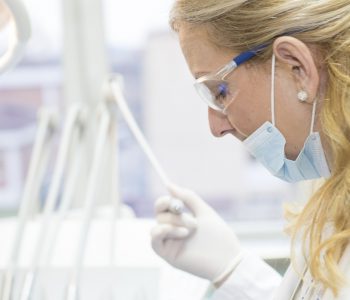
Key PPE Usage Recommendations For Dental Settings
Posted on March 1, 2023
Dental practices are held to high standards when it comes to cleanliness. This is because the environment in which dental procedures are performed is sterile and any dirt or bacteria could potentially cause infection.
As a result, dental practices must be cleaned using strict protocols that are designed to eliminate all sources of contamination. It is, however, important to maintain cleanliness and organisation not just for the health of your patients but also for the efficiency of your business.
1. Provide your staff with PPE & educate them on its correct use
PPE includes items such as gloves, gowns, aprons, face masks, and face shields. It is important to educate staff on when to use PPE, how to put it on, and how to take it off. Staff should also be taught how to properly clean and store PPE. Providing PPE and educating your employees on its correct use will help to protect them from exposure to hazardous materials and potential infections.
2. Wear protective gloves
Anyone who works in the medical field knows that protecting oneself from infection is of the utmost importance. One way to do this is to wear gloves whenever there is potential for contact with blood, body fluids, mucous membranes, non-intact skin or contaminated equipment.
Gloves help to create a barrier between the hands and these potentially infectious materials. In addition, they can also help to prevent the spread of infection if you have any cuts or breaks in your skin. Nitrile gloves are common form used, due to their protective properties.
However, it’s important to remember not to wear the same pair of gloves for the care of more than one patient and not to reuse them! Remember to also wash your hands immediately after removing gloves.
3. Wear protective clothing
One of the most important ways to prevent the spread of infection is to wear PPE that covers any exposed skin and personal clothing.
This barrier helps to protect both the patient and the healthcare worker from coming into contact with blood, saliva, or other potentially infectious materials (OPIM).
Wearing PPE also reduces the risk of cross-contamination by keeping contaminated materials away from clean areas of the body. When selecting PPE, it is important to choose items that fit properly and are comfortable to wear.
4. Wear eye, nose and mouth protection
Most dental procedures put the medical professionals in close contact with blood, saliva or other body fluids, so it is essential to wear the proper protection. This includes a mouth mask, eye shield, and gloves.
Blood and body fluids can contain harmful viruses and bacteria that can cause serious illness. By wearing the proper protection, you can help to prevent the spread of these diseases. In addition, it is important to dispose of any contaminated materials in a safe and sanitary manner.
5. Remove PPE before leaving the work area
As a dental professional, you have a responsibility to protect yourself and your patients from the spread of infection. One of the most important ways to do this is to remove your PPE before leaving the work area. By removing your PPE, you help to ensure that any contaminants on your clothing or body are not transferred to other areas of the practice.
It is also important to be aware of the signs of infection and to take immediate action if you see them. By taking these simple precautions, you can help to keep your patients safe and healthy.
At F2 Medical Supplies, we offer a wide range of PPE products, from gloves and masks to gowns and face shields. Browse our entire range PPE online, available at competitive prices with next-day delivery options.